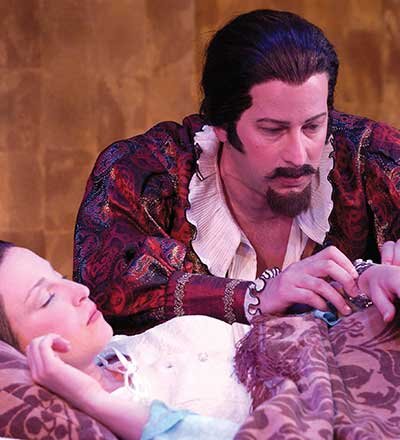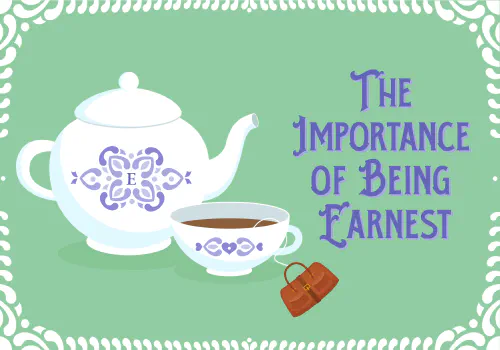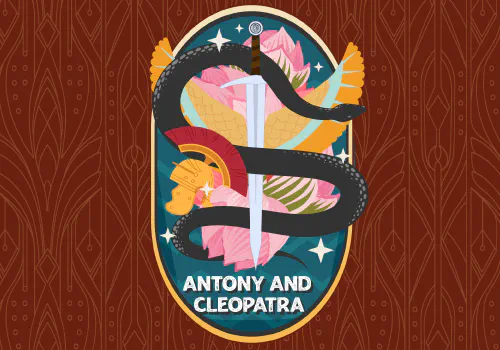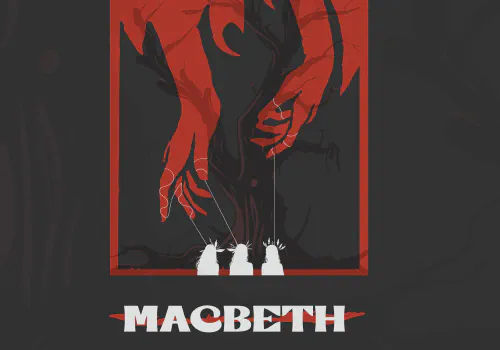Is Cymbeline a Fairy Tale?

Susan Shunk (left) as Imogen and Michael David Edwards as Iachimo in the Utah Shakespeare Festival’s 2002 production of Cymbeline.
By Kathryn Neves
Once upon a time, a man from Stratford-upon-Avon moved to London to write some of the best masterpieces in the English language. In fact, he was very popular, writing horrific tragedies, gut-busting comedies, and glorious histories that had his audiences constantly returning to see more. But after writing these stories for many years, the man decided to try something new: he began writing romances. One of the best of these was a play called Cymbeline.
Cymbeline has always been one of Shakespeare’s most beautiful, and unique, works. While using elements of both comedy and tragedy, this play becomes something more than both of them put together. Most people, after seeing this play, have the same thought: Cymbeline is a fairy tale! So much of Cymbeline seems like it could have come straight out of the Brothers Grimm, with folklore plots and characters that have been passed down for millennia. These are stories we all know; stories we’ve heard since birth, that our ancestors have heard since birth. And it’s these fairy tale elements that make Cymbeline so universal—and so fun.
One of the most fundamental parts of any fairy tale is its ending. In so many stories, a prince or princess marries a commoner, and the commoner becomes a part of the royal family. Thus, the story ends. Interestingly enough, we can see this in Cymbeline—not at the ending, but at the beginning. As the play starts, we learn that Princess Imogen—daughter of King Cymbeline—has married a young man named Posthumus. Posthumus is not a prince; he’s not royalty or nobility at all. He is an orphan who was adopted into the court. In other words, he is a commoner. Imogen marries him, not for money or position, but for love; something that doesn’t sit too well with King Cymbeline. Just like Cinderella marrying her prince, or Rapunzel marrying hers, or Beauty marrying her beastly prince, or the soldier marrying the princess in “Twelve Dancing Princesses,” or even Aladdin marrying the Sultan’s daughter in The Arabian Nights—Posthumus marries Princess Imogen, and the play immediately begins to feel like a fairy tale.
Another theme that can be found throughout folklore and fairy tales is long-lost royalty, or royalty disguised as commoners, while no one— sometimes not even themselves— knows their true heritage. “The Goose Girl” comes to mind; so does “Sleeping Beauty” and “Snow White.” We can even see this in the Arthurian legend, as the young Arthur is raised as a commoner and doesn’t realize his heritage until he pulls the sword from the stone. Shakespeare knew the power of this kind of story, and put it into Cymbeline. At the beginning of the play, we learn that the king’s two sons were abducted long ago. Later on, we meet them, living in a cave as hunters with no knowledge of their royal birth. At the end they return to the court and learn that they are princes. This reunion calls to mind plenty of fairy tale endings.
At one point in the play, Posthumus believes that Imogen was unfaithful to him, and he tells his servant Pisanio to kill her. Pisanio, though, can’t do it. He knows that Imogen is pure and good, and can’t make himself follow his master’s orders. “Disloyal?” he says. “No. / She’s punished for her truth and undergoes, / More goddesslike than wifelike, such assaults / As would take in some virtue” (3.2.6-9). Instead, Pisanio urges Imogen to disguise herself and to flee the court; to run away and go into hiding—which she promptly does. Anyone who’s ever even heard of “Snow White” can pick up on the similarities. The huntsman cannot kill Snow White, and tells her to go into hiding far away from the evil queen and her plots.
Of course, another key part of “Snow White” is the poison apple. The wicked queen, jealous of Snow White’s beauty, gives the princess a poisoned apple that sends her into a deep, enchanted sleep—so deep that the dwarves think she is dead. Then we have “Sleeping Beauty,” where the witch entices the princess into pricking her finger on a spinning wheel and the princess falls asleep, enchanted. This is a plot point Shakespeare clearly enjoyed. We’ve all seen Romeo and Juliet and know about the potion that sends Juliet into a deep sleep for several days. This idea of poison and death-like sleep makes its way into Cymbeline, too. The queen sends Imogen a bottle containing what she thinks is poison; she plans to kill the princess. However, a doctor secretly switches the poison with a potion. The potion, the doctor explains, will send the drinker into a harmless sleep that looks exactly like death. Imogen takes the potion, believing it to be medicine, and sleeps so deeply that everyone around her believes she is dead. They mourn her and prepare to bury her, before she wakes up.
But perhaps it’s the queen that is the most fairy-tale like of all. She represents one of the most common characters in all folklore and fairy tale: the evil queen. The evil stepmother. Cymbeline’s wife, like Snow White’s queen and Cinderella’s stepmother and even the stepmother in “Hansel and Gretel,” will stop at nothing to accomplish her nefarious deeds. She tries to force Imogen to marry her son, Cloten. She plans on killing both the king and Imogen in order to secure her place on the throne. She tries to poison Imogen, just like her fairy tale predecessors. She even has some very witchy qualities: we learn that she used to study potion and perfume-brewing in her youth. “Hast thou not learned me how / To make perfumes, distil, preserve. . . . I will try the forces / Of these thy compounds on such creatures as / We count not worth the hanging—but none human— / To try the vigor of them” (1.5.15-24). It’s easy to picture her huddled over a cauldron like any fairy tale witch. Cymbeline’s evil queen could have jumped from the pages of any number of fairy tales.
Fairy tales and folklore have been around for centuries. We know these stories, and we love them. We understand them, because—like Shakespeare—they are universal. They tell us what evil is, what love is, what power is; they show us human nature. That’s why Cymbeline is such a fantastic play. It’s not only a good story but a universal one— as exciting, and familiar, as a fairy tale.









